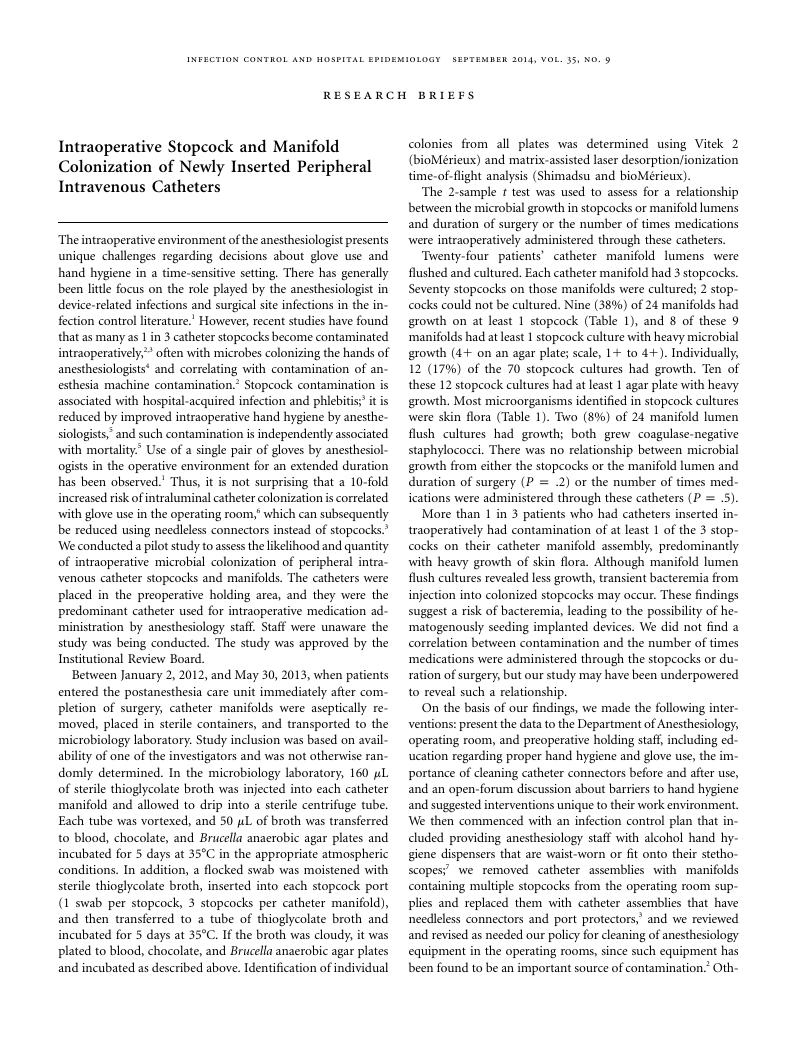Crossref Citations
This article has been cited by the following publications. This list is generated based on data provided by Crossref.
Munoz-Price, L. Silvia
and
Weinstein, Robert A.
2015.
Fecal Patina in the Anesthesia Work Area.
Anesthesia & Analgesia,
Vol. 120,
Issue. 4,
p.
703.
Birnbach, David J.
Rosen, Lisa F.
Fitzpatrick, Maureen
Carling, Philip
Arheart, Kristopher L.
and
Munoz-Price, L. Silvia
2015.
A New Approach to Pathogen Containment in the Operating Room.
Anesthesia & Analgesia,
Vol. 121,
Issue. 5,
p.
1209.
Mahmutoglu, Derya
and
Munoz-Price, Luisa Silvia
2018.
Infection Prevention.
p.
29.
Hadaway, Lynn
2018.
Stopcocks for Infusion Therapy.
Journal of Infusion Nursing,
Vol. 41,
Issue. 1,
p.
24.
Greene, E.S.
2021.
Challenges in reducing the risk of infection when accessing vascular catheters.
Journal of Hospital Infection,
Vol. 113,
Issue. ,
p.
130.
Jelacic, Srdjan
and
Bowdle, Andrew
2022.
Infection Prevention.
p.
31.
Gerasimov, Madina
Lin, Della M.
Munnur, Uma
and
Donnelly, Melanie
2024.
Preventing perioperative infections: a call to action for anesthesiologists.
Current Opinion in Anaesthesiology,
Vol. 37,
Issue. 6,
p.
712.



